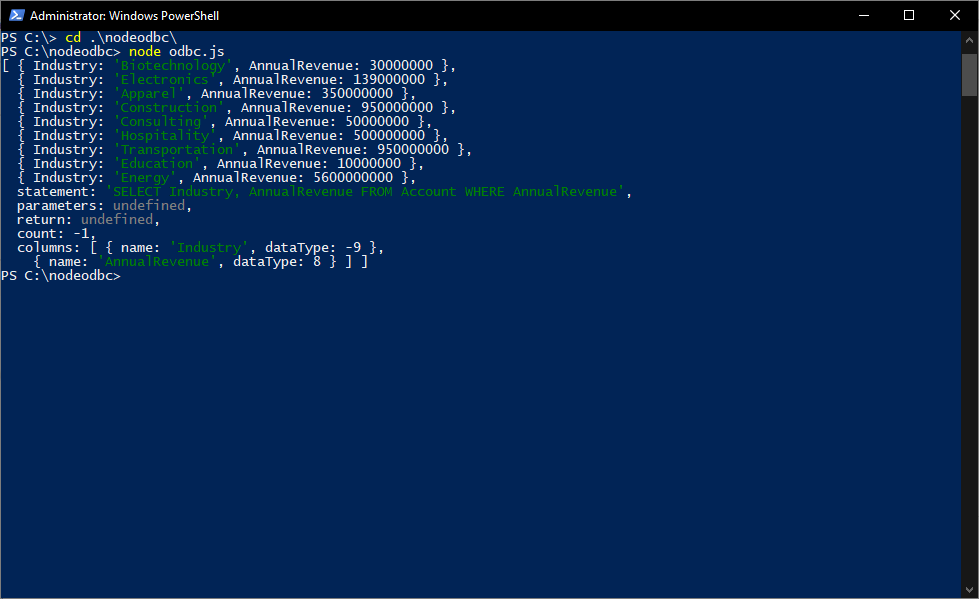Discover how a bimodal integration strategy can address the major data management challenges facing your organization today.
Get the Report →Query YouTube Analytics Data through ODBC in Node.js
Use node-odbc to execute SQL queries against YouTube Analytics data from Node.js.
Node.js is a JavaScript runtime environment that allows you to run JavaScript code outside of a browser. With the CData ODBC Driver for YouTube Analytics, you can access live YouTube Analytics data from Node.js apps and scripts. In this article, we walk through installing node-odbc and the required tools to create a simple Node.js app with access to live YouTube Analytics data.
With built-in optimized data processing, the CData ODBC Driver offers unmatched performance for interacting with live YouTube Analytics data in Node.js. When you issue complex SQL queries from Node.js to YouTube Analytics, the driver pushes supported SQL operations, like filters and aggregations, directly to YouTube Analytics and utilizes the embedded SQL engine to process unsupported operations client-side (often SQL functions and JOIN operations).
Connecting to YouTube Analytics Data
If you have not already done so, provide values for the required connection properties in the data source name (DSN). You can use the built-in Microsoft ODBC Data Source Administrator to configure the DSN. This is also the last step of the driver installation. See the "Getting Started" chapter in the help documentation for a guide to using the Microsoft ODBC Data Source Administrator to create and configure a DSN.
YouTube Analytics uses the OAuth authentication standard. You can use the embedded CData OAuth credentials or you can register an application with Google to obtain your own.
In addition to the OAuth values, to access YouTube Analytics data set ChannelId to the Id of a YouTube channel. You can obtain the channel Id in the advanced account settings for your channel. If not specified, the channel of the currently authenticated user will be used.
If you want to generate content owner reports, specify the ContentOwnerId property. This is the Id of the copyright holder for content in YouTube's rights management system. The content owner is the person or organization that claims videos and sets their monetization policy.
Building node-odbc
In order to connect to YouTube Analytics through the CData ODBC Driver, you need to build node-odbc manually (after installing the required tools).
Installing the Required Tools
The following commands install the tools required to build node-odbc (note the -g parameter, which installs the tools globally).
npm i -g windows-build-tools npm i -g node-gyp
Building node-odbc
After installing the required tools, create a directory for the Node.js app and install odbc (which builds the binary for us to use in our Node.js script).
mkdir nodeodbc cd nodeodbc npm i -g node
Querying YouTube Analytics from Node.js
With the ODBC Driver installed, a DSN Configured, and node-odbc built, we are ready to query live YouTube Analytics data from a Node.js app. The sample code below connects to a specific DSN and queries the Groups table.
myscript.js
const odbc = require('odbc');
async function queryYouTubeAnalytics() {
const connection = await odbc.connect(`DSN=CData YouTubeAnalytics Source`);
const data = await connection.query('SELECT Snippet_Title, ContentDetails_ItemCount FROM Groups');
console.log(data);
}
queryYouTubeAnalytics();
Once you write the app, use node to execute the script:
node myscript.js

Download a free, 30-day trial of the CData ODBC Driver for YouTube Analytics and start working with your live YouTube Analytics data in Node.js. Reach out to our Support Team if you have any questions.





